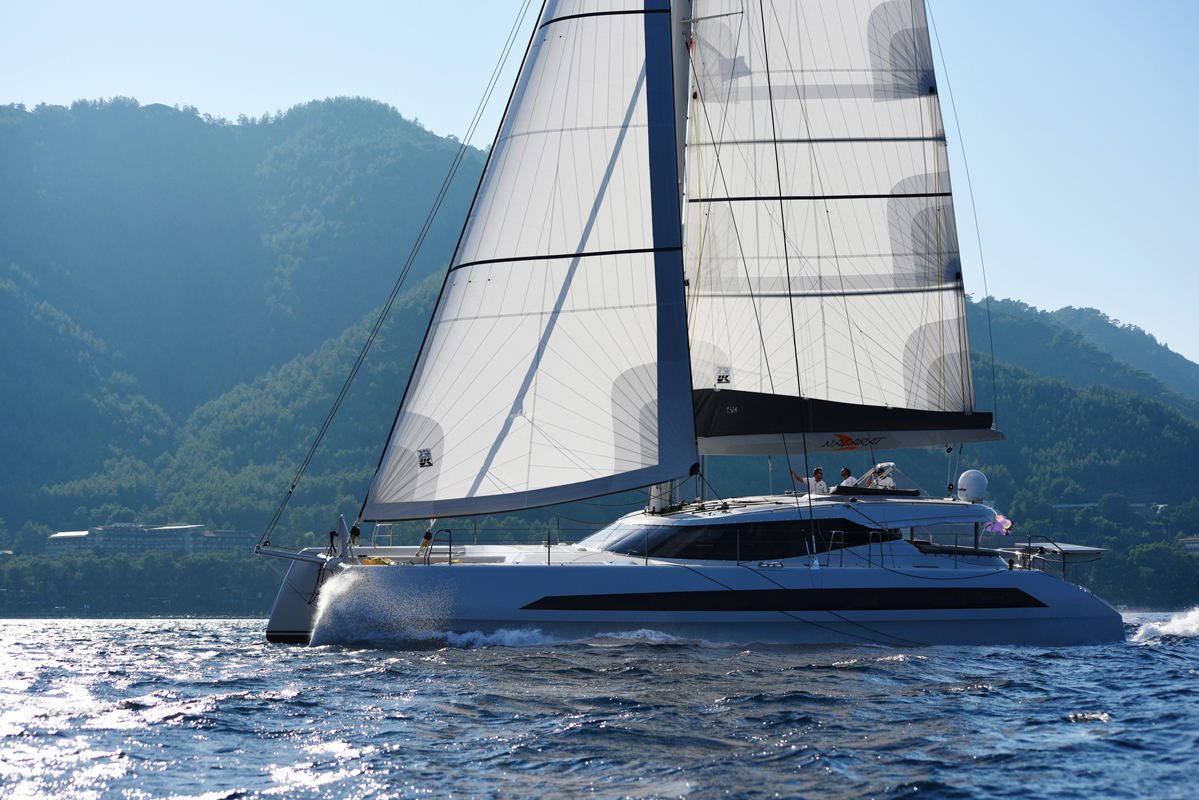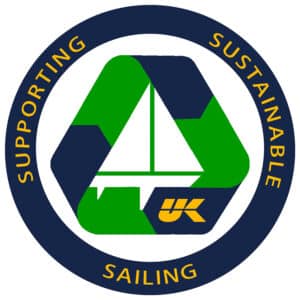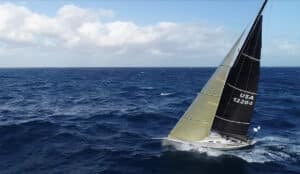Anyone who has been on the water in past years has seen the growth of the cruising (and racing) catamaran market. With many checking in at 50’+, these dual and triple hull boats have redefined how sails are made for them. Here are some facts that will improve your multihull sailmaking smarts.
Why Multihull and Monohull Sails are Different?
With the increased stability multihulls enjoy due to the two or three hull configurations (ok, they can capsize but stick with the storyline for now), multihull sailplans can develop relatively heavier loads than monohull sails. When a monohull heels, more of the wind spills off the back of the sail. Multihulls can stand-up to loads that would over power a similarly sized monohull. As such, the sails made for multihulls are different. How, you ask?
How the sails differ
Let’s start with the sailcloth itself. Because the loads are much more on multihull boats, UK Sailmakers chooses the materials based on their ability to stand-up to excessive aerodynamic pressure. Hydranet Radial is the most widely used fabric and currently the most popular in multihull boats. However, UK also manufactures X-Drive® sails for performance-oriented multihulls from time to time because X-Drive sails have demonstrated their ability to maintain shape and, thanks to their continuous yarn construction, avoid catastrophic seam failures.
Other Differences
Multihull sails differ from monohull sails from the design of the sail to the equipment used in finishing them. These sails differ a lot in the production and finishing techniques that can range from full-length battens to leech tension adjustors to headboard systems that will allow you to put a cover over a fathead main. Designs vary from sail to sail and the lack of backstay gives us the freedom to design a wide roach. Also, there are differences in the twists and roaches on the other sails. Because these boats don’t sail as close to the wind as monohulls…but at greater speeds, multihull sails tend to be designed and built with less draft.
And, whereas sail weight is often a factor on monohulls (racers and cruisers alike) sail weight is a little less important for multihulls with greater consideration given to managing the loads developed.
UK Sailmakers Turkey is enjoying a booming business making sails for larger multihulls. The competence of their machine park and the size of our stitching table gives us an advantage in this market.
Next time you see a large multihull sail by, take a moment and see what differences you can notice in her sails.




